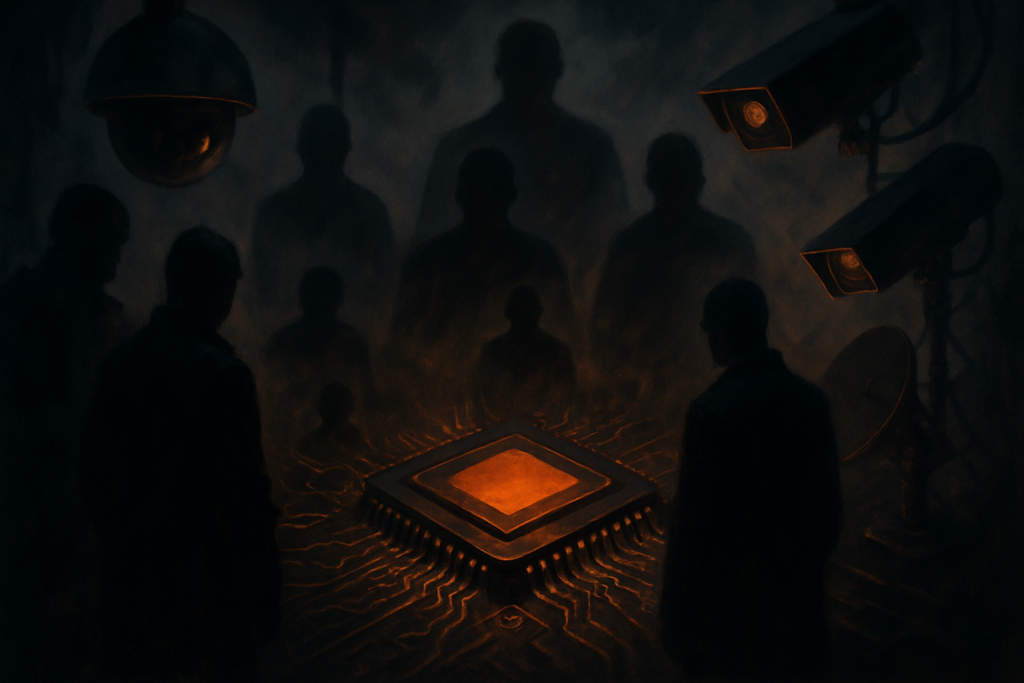It was August 2nd, 2025, a day that felt less like the Jetsons and more like a Cold War thriller, only this time the battleground wasn’t Berlin, but the silicon valleys of the world. Nvidia, the reigning champion of AI chip design, found itself summoned to Beijing by the Cyberspace Administration of China (CAC), not for accolades, but for interrogation. The charge? “Backdoor safety risks” lurking within their H20 AI chips, chips specifically crafted to navigate the treacherous waters of U.S. export controls and find safe harbor in the Chinese market.
Think of it like this: Nvidia had built a Trojan horse, not to sneak soldiers into Troy, but to sneak processing power into China. Only, according to the CAC, this horse came pre-equipped with a GPS tracker, a remote kill switch, and, presumably, a self-destruct button worthy of a James Bond villain. The CAC claimed these chips could be remotely tracked, located, and disabled. Nvidia was tasked with proving otherwise, providing documentation to refute these allegations. The stakes, as they say, were higher than a neural network’s layer count.
The H20: A Chip Off the Old Geopolitical Block
To understand the gravity of this situation, we need to rewind a bit. The H20 wasn’t just another chip rolling off the production line. It was a carefully engineered compromise, a technological olive branch extended (or perhaps shoved) across the Pacific. See, the United States, in its ongoing dance of diplomacy and economic maneuvering with China, had previously imposed restrictions on the export of advanced AI chips. Nvidia, ever the pragmatist, responded by designing the H20, a chip that adhered to these export limitations, allowing them to continue doing business in the Middle Kingdom. It was, in essence, a concession chip, a peace offering in silicon form.
Then, in a move that surprised many, the U.S. recently appeared to lift a de facto ban on the H20, seemingly viewing it as a positive step in trade negotiations. This was the green light Nvidia needed. They revved up the marketing engines, prepped the sales teams, and got ready to ship. Except, China wasn’t exactly rolling out the red carpet. Instead, they issued a summons, demanding Nvidia explain why their peace offering might actually be a weapon in disguise. It’s the kind of plot twist you’d expect in a John le Carré novel, not a tech blog.
Implications: When AI Becomes a Pawn
The CAC’s actions send a clear message: trust, in the age of AI, is a scarce commodity. This isn’t just about Nvidia; it’s about the entire global AI landscape. It underscores the escalating scrutiny over AI technologies and their geopolitical ramifications. Every line of code, every circuit board, every algorithm is now viewed through the lens of national security. The implications are far-reaching.
First, this could significantly impact future trade agreements. If China remains unconvinced by Nvidia’s explanations, it could lead to stricter regulations and even outright bans on other AI-related technologies. This would not only hurt Nvidia’s bottom line but could also disrupt the entire supply chain, impacting everything from autonomous vehicles to medical imaging. Imagine trying to build a self-driving car when half the necessary chips are stuck in customs limbo. It’s a logistical nightmare.
Second, this incident will undoubtedly fuel the ongoing debate about technological sovereignty. Countries are increasingly wary of relying on foreign technology, particularly when it comes to something as strategically important as AI. This could accelerate the development of domestic AI chip industries in countries like China, further fragmenting the global tech landscape. We might be heading towards a future where every nation has its own AI ecosystem, walled off from the rest of the world. Think of it as the digital equivalent of the Tower of Babel, only instead of different languages, we have different algorithms.
Tech Specs and Skepticism: What’s the Real Deal?
The technical details of the alleged “backdoor” remain shrouded in secrecy. What exactly does the CAC suspect? Is it a hardware-level vulnerability? A software-based exploit? Or simply a case of good old-fashioned paranoia? Without more information, it’s difficult to assess the validity of the claims. However, the very nature of AI chips raises legitimate concerns. Their complexity makes them inherently difficult to audit. Millions of transistors, billions of lines of code – it’s a haystack of epic proportions, and finding a needle in it is a Herculean task.
One plausible theory is that the CAC is worried about hidden instructions or microcode within the chip that could be remotely activated to degrade performance or even disable the chip entirely. Another possibility is that the chip’s telemetry data, which Nvidia uses for monitoring and diagnostics, could be used to track the location of the chip and the systems it powers. It’s a classic case of “if you can measure it, you can monitor it.”
The Human Cost of the AI Arms Race
Beyond the financial and geopolitical implications, this incident raises deeper ethical questions about the role of AI in society. Are we building a future where technology is constantly weaponized, where every innovation is viewed with suspicion and mistrust? The CAC’s actions, whether justified or not, highlight the potential for AI to become a source of conflict and division, rather than a tool for progress and collaboration. It’s a sobering reminder that technology, in and of itself, is neither good nor evil. It’s how we choose to use it that matters.
The Nvidia saga is a microcosm of the larger challenges facing the AI industry. As AI becomes more powerful and pervasive, it’s crucial that we address the ethical, security, and geopolitical implications head-on. Otherwise, we risk creating a world where AI is not a force for good, but a source of fear and uncertainty. And that’s a future nobody wants to live in.
Discover more from Just Buzz
Subscribe to get the latest posts sent to your email.


